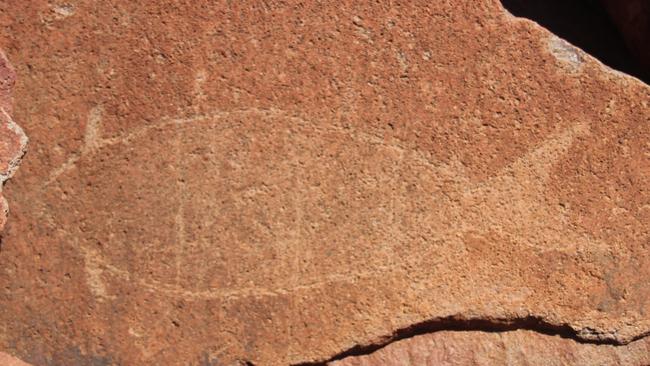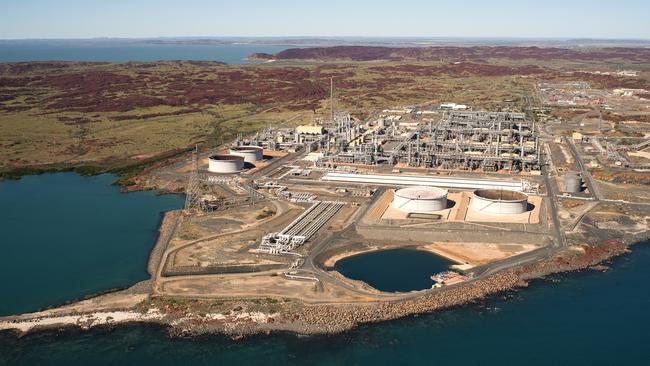WA government accused of lying about study to secure North West Shelf expansion
Archaeologist Benjamin Smith says the findings of a key study were misrepresented by the WA government in a summary full of ‘lies’ and ‘propaganda’.

The West Australian government has been accused of gagging the scientists behind a crucial scientific study and misrepresenting their findings in an attempt to help secure federal approvals for Woodside Energy’s $30bn North West Shelf gas plant extension.
University of Western Australia professor of archaeology Benjamin Smith on Tuesday said the “brilliant” scientists behind a recent state government- and Woodside-funded Murujuga Rock Art Monitoring Project study to investigate if emissions from heavy industry on the Burrup Peninsula are harming the ancient Aboriginal rock art in the surrounding area had been prohibited from speaking about their findings.
Instead, he said, those findings had been misrepresented in an executive summary that was full of “lies” and “propaganda”.
He urged Environment Minister Murray Watt to delay handing down his decision on the North West Shelf extension so he could consider alternative interpretations of the data.
“This document is not worth the paper it’s written on,” Professor Smith said, tearing up a copy of the executive summary.
“It’s a disgrace, a disgrace to Australian science.”
Senator Watt, who replaced Tanya Plibersek in the portfolio after the recent federal election, has promised to make a decision on the project by the end of this week and is widely expected to sign off on Woodside’s plans to extend the life of the North West Shelf out to 2070.
Professor Smith has long been investigating whether industrial emissions are affecting the Burrup’s rock art. He revealed to The Australian earlier this week that a rock sample taken from the area some 30 years ago had undermined the MRAMP study’s key claim that it was emissions from a power station that operated in the area in the 1970s and 1980s – rather than emissions from current facilities such as the North West Shelf plant – which was to blame for the harm to rocks identified in an area around the Burrup’s main industrial area.
He went a step further on Tuesday, telling reporters on the steps of the WA parliament that his colleagues working on the MRAMP study had been stopped from speaking publicly about their findings. He accused the WA government of writing an executive summary of the MRAMP study that directly contradicted the findings of the 800-page report, including doctoring a crucial graph that showed current emissions near industry exceeded the level deemed safe for the rock art by MRAMP scientists.
“What we have here in the executive summary is an entire fabrication that tries to deflect attention from the very serious findings by this report,” he said.
He said while the scientists behind the study were forbidden from speaking to the media about their findings under the terms of the $26m contract, he said he knew they were unhappy with the way their findings had been represented.

“Information travels across campuses in this town. I know how they feel, they are angry,” Professor Smith said.
WA Premier Roger Cook noted that the report had been the subject of a peer review, but Professor Smith said that review would not have extended to the executive summary.
He said an executive summary written by scientists would have emphasised that the study had shown that the key pollutants from heavy industry on the Burrup caused damage to the rocks found in the area, and that “elevated porosity” had been found in rocks in the immediate vicinity of that heavy industry.
“There are good reasons why they held this report for a year, and that’s because this report contains very serious evidence that industrial emissions are currently damaging the rock art of Murujuga,” he said.
He also said a graph reproduced in the executive summary had been “doctored” from the one in the study itself, with a line which he said marked the level of emissions deemed by the scientists to hold little to no concern about risks to the rock art. The removed line, he said, clearly showed emissions of nitrogen oxides at five monitoring stations near the heavy industry were above that low-risk level.




To join the conversation, please log in. Don't have an account? Register
Join the conversation, you are commenting as Logout